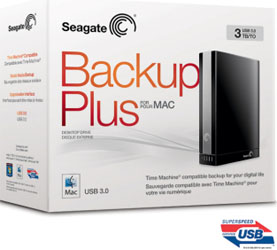Digital Marketing Simplified – Secrets of Social Media
Digital Marketing Simplified – Secrets of Social Media
By Rakesh Raman
Only the mysteries of Egyptian mummies come somewhere close to the extent of enigma that social media has brought to the digital world. Do we really understand social media?
Social media is not about just creating your pages on social media sites. Social media is not about sitting idly on social hangouts. Social media is not about just pressing the Like button to others’ posts. Social media is not about blindly expanding your network.
And social media is not about joining a slew of groups because it costs you zilch. Social media is not about sending spam messages to others to join your groups. As a corporate executive, social media is also not about sharing pictures of your pets and kids.
Then what’s social media? How should it be used for marketing communications? Social media is about messaging – skillfully written teaser messages that should attract the target users. Social media is about engagement – communications that could engage your buyers and others.
Social media communications is a highly technical job and its effectiveness depends on your selection of social media sites, your message content, its timing, language, iterations, and so on.
Most marketers do not understand these social media subtleties involving brand messaging and engagement. That’s why almost all social media users are clueless about this field of digital marketing and it continues to be a mysterious land for millions – and perhaps billions – of users connected with social media sites.
[ Advertisement: RMN Company’s Digital Marketing Services ]
As a marketer, you must not get illusioned or impressed by the number of Facebook fans or Twitter followers of a person or a brand. You can buy fake fans and followers like you buy onions and potatoes in the market. And believe me, these will be cheaper than many commodities available today. But as they’re fake, they won’t help you achieve your marketing objectives. (Read this article to know what I am trying to say on this point.)
All this doesn’t mean that you should not use social media. But remember, social media communication is that part of digital marketing that you have to do without expecting any return to your efforts. If used properly, social media use will give you some indirect benefits such as attention from search engines, sharing by others, and more Web space utilization.
So, let’s learn more about social media. Before I discuss it further, I assume that your corporate or brand website is ready with sufficient high-quality content – say, at least 30 web pages to begin with. It will be much better if you have multimedia content (graphics, videos, animations, etc.) on these pages.
I am particularly concerned about your website quality because social media communications can be effective when your website is in order – in quantity as well as quality.
And here we are talking about the free use of social media. Although you also can advertise on social sites by making payment to the sites, you can ignore this option for the time being because first you have to be familiar with social media usage.
To begin with, you can select the social media sites based on your products. Although there is no hard and fast rule about this selection, still Facebook will be more useful for consumer products and Linkedin for enterprise products and services. Create your full company profiles including products and services on these sites.
If your products have some beautiful pictures (like in the case of garments vendors, toys manufacturers, hotels, etc.), you should use Pinterest and Flickr social sites. And if you have some well-made videos, don’t forget to put them on video-sharing sites like YouTube and Vimeo. And Twitter is a microblogging site for instant messages of up to 140 characters.
Remember, the entire content is coming from your website and you will share it after customization through social media sites. After covering the popular social sites, you can repeat this exercise on dozens of others similar sites.
Now, you can put social-sharing buttons on your website. It will allow your site visitors to visit your social media pages or share the content they like with their friends. Plus, you can start asking your employees, business partners, friends, and others to get connected with your social media pages. Don’t feel disheartened if the number of connected people is not growing. Just keep it up.
Once your pages are created on different social sites, you can depute a dedicated person from your team to update these pages regularly. The information can be related to your new products, the events in which you have participated, new equipment at your factory, client case studies, press releases, and so on.
You will put the main information first on your website and use part of this information on your social media pages where you can just put brief teaser messages inviting others to your website where they can know more about that topic. The idea is to bring more people from your social media pages to your website.
When you have sufficient content on your social media pages and these are being updated regularly, you can run social campaigns to attract more people to these pages and, in turn, to your website. Here are Example 1 and Example 2 of social media campaigns that tend to increase brand awareness and consumer engagement.
Thus, you can continue your social media journey as part of your overall digital marketing exercise. And you can begin it right away.
To be continued… in the next part of our Digital Marketing Simplified series.
This is the third article in the 7-part Digital Marketing Simplified series that RMN Digital has started.
You also can read the first article: Digital Marketing Simplified – How to Build a Brand and the second article Digital Marketing Simplified – Follow the Buyer.
By Rakesh Raman, the managing editor of RMN Digital.
This article is a part of our initiative: Tech-Wise Knowledge Center for SMBs












